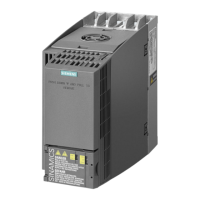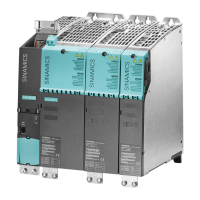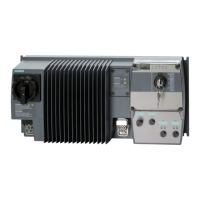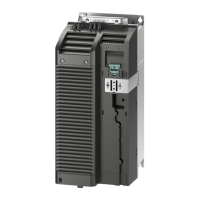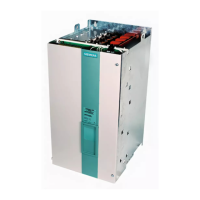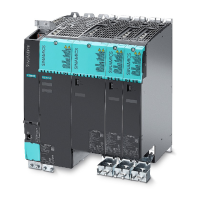8/80
Siemens Building Technologies Commissioning Guide CM1G5192en
HVAC Products 4 EMC-compatible installation of SED2 26.02.2003
4 EMC-compatible installation of SED2
4.1 Why EMC-compatible installation?
If no measures against electromagnetic interference are taken, VSDs will cause interference. These interference
signals can produce the following problems near the VSD:
− Distortion of analog signals, for example from BMS, leading to a distortion of measured values
− Sporadically occurring errors
− Unstable control
− Malfunction of other devices located near the VSD
− Malfunctioning of communication equipment
This means that reliable operation of VSDs and associated equipment can be ensured only if the following inter-
ference suppression measures in compliance with EMC are taken:
• When installed in accordance with the wiring SED2 recommendations of this Manual. The units comply with the
European Norm EN 61 800-3, “Adjustable speed electrical power drive systems”. This standard specifies dif-
ferent limits for domestic and industrial applications, which define whether an integral EMC filter is required. For
further information, refer to the SED2 Reference Manual
•
When units are selected which include integral filters, they will meet the conducted and radiated RFI
emission limits specified in EN 55 011
4.2 Mounting IP20 versions of the VSD in a control cabinet
• Group power electronics devices, such as mains fuses, motor protection switches, contactors, starters, or
VSDs in the control cabinet and segregate them from sensitive controls and measuring equipment and their
lines by a galvanically conductive, grounded partitions
• Locate the VSD(s) in the control cabinet such that the mains, motor and potential equalization cables can be
run directly and be kept as short as possible
• Ensure that there is proper galvanic bonding between the metal rear of the VSD and the mounting rail or grid
via the fixing screws. Mounting rail or grid must be electrically conductive and may not be painted
• Remove insulating layers of grease, paint, or other protective layers where ground and protective earth
connections are to be made, or use adequate connecting elements
• Protect contact or connection points against corrosion. Inner walls should be galvanized
• If an external EMC input filter is required, install it as close as possible to the VSD and ensure that its metal
housing is adequately grounded via the mounting rails or the mounting grid. With frame sizes A …C, use the
relevant EMC filters for mounting underneath the VSD. For connection of the EMC filter to the inputs of the
VSD, use shielded cable and connect the shielding to ground by means of grounding clamps
• Check to ensure that contactors in the control cabinet, if present, are suppressed against radio noise, either
with RC units in the case of AC contactors, or with freewheeling diodes in the case of DC contactors, whereby
the suppression devices are to be connected to the coils
4.3 Mounting IP54 versions of the VSD
• Install the VSD as close as possible to the motor to be driven (monoblock, fan or pumps)
• Remove insulating layers of grease, paint, or other protective layers where ground and protective earth con-
nections are to be made
• Protect contact or connection points against corrosion
Important note: When mounting IP54 versions of VSDs to concrete or brick walls or other nonconductive sur-
faces, it is mandatory to connect the VSD metal housing via a large potential equalization line of
low impedance to ground (potential equalization rail). For that purpose, we recommend to use a
ribbon type, tin-plated copper mesh or similar with a cross-sectional area of at least 16 mm
2
.
